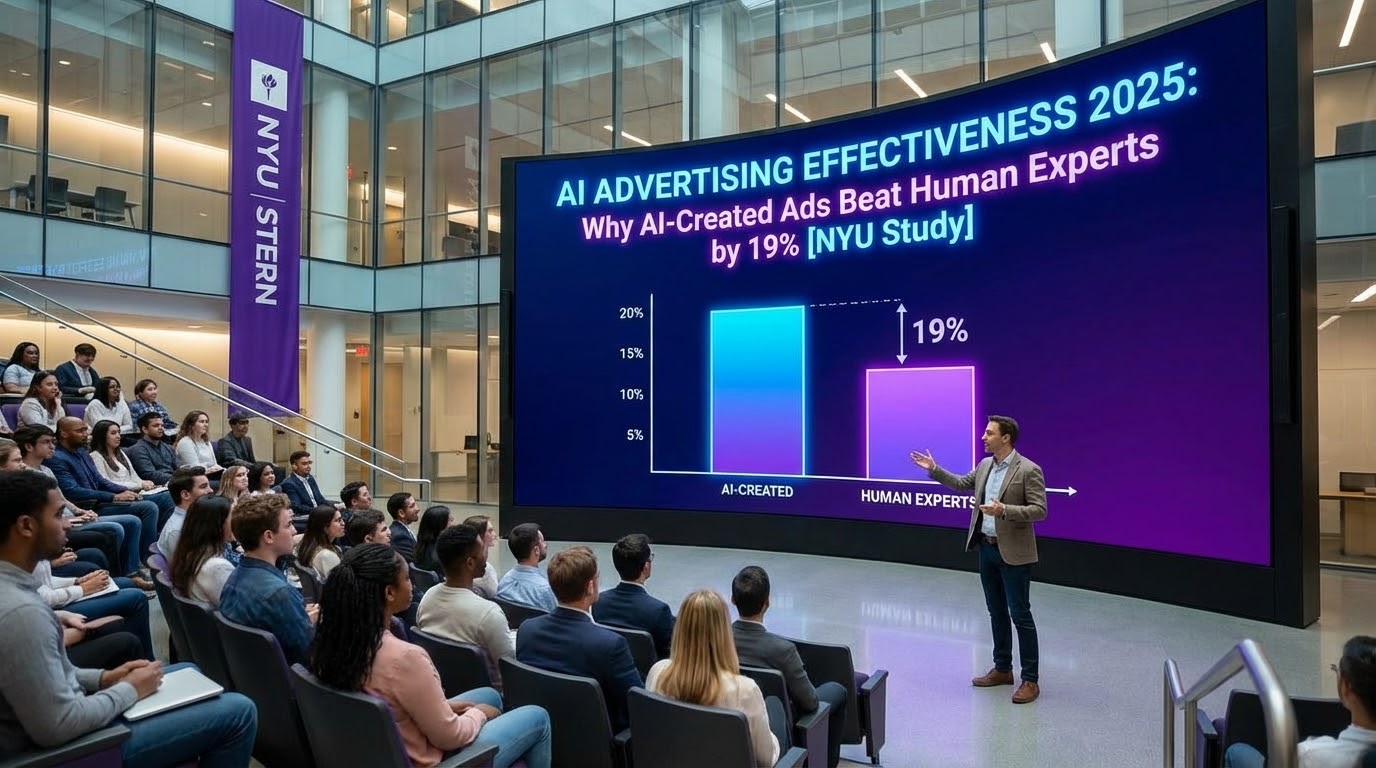.avif)
GEO (Generative Engine Optimization): How to optimize your presence in AI search results in 2025
The digital marketing landscape is undergoing a radical transformation with the emergence and massive adoption of platforms based on generative artificial intelligence. Google Gemini, ChatGPT, Perplexity, Claude... these tools are no longer simple technological gadgets, but are deeply redefining the way Internet users search for and consume information on a daily basis. For e-commerce brands, this new paradigm requires an approach that is complementary to traditional SEO: GEO (Generative Engine Optimization).
With already more than 400 million weekly users for ChatGPT at the beginning of 2025 and the increasing integration of generative elements in Google's results, the question is no longer whether GEO is relevant, but rather how to effectively integrate it into your strategy so as not to remain at the forefront of this revolution.
What exactly is GEO and why is it becoming essential?
Generative Engine Optimization is the set of practices aimed at optimizing the visibility of a brand, product or content in the responses automatically generated by artificial intelligence. Unlike traditional SEO, which targets ranking in results pages (SERPs), GEO seeks to be cited or recommended directly by AI systems.
These generative tools work differently than traditional search engines:
- They synthesize information to provide direct and accurate answers
- They learn and establish associations between entities and concepts
- They prefer structured, factual and easily understandable content
- They create new content based on the sources consulted rather than simply listing them.
The growing importance of GEO is explained by the evolution of user behaviors. According to our studies, more than 30% of searches in 2025 now go through conversational interfaces rather than through a classic Google search.
Impact on organic traffic: a quantifiable reality
The emergence of results generated by AI has a measurable impact on traditional organic traffic. According to a recent study conducted by TUYA Digital, the introduction of generative responses like Google Gemini resulted in:
- An average decrease of 8.42% in the click rate (CTR) on organic positions 1 to 10
- A stronger impact on the highest positions, with a drop of 10.39% for position 1
- A greater decrease for informational than transactional requests
Even more alarming, by 2026, some experts predict a 15 to 30% decrease in traditional organic traffic in favor of conversational interfaces and results generated by AI.
This evolution can easily be explained: users prefer efficiency. A synthetic response generated by AI offers a more fluid and immediate experience than navigating between different websites to collect information.
GEO vs SEO: understanding their fundamental differences
What sets them apart:
SEOGEOOptimizes for classic search enginesOptimized for generative AI systemsAims to rank in SERPs Aims to be cited in generated responsesRelies heavily on backlinksPrioritizes contextual mentions and associationsMeasures positions and organic trafficMeasures positions and organic trafficMeasures rankings and organic trafficMeasures quotations, visibility and influencesMeasures quotations, visibility and influencesPrimarily targets GoogleTarget multiple platforms (ChatGPT, Gemini, Perplexity, etc.)
GEO does not replace SEO, it complements it. SEO remains fundamental to ensuring basic visibility on search engines, while GEO focuses on optimizing for responses generated by AI.
The 4 pillars of an effective GEO strategy
1. Optimizing content for AI systems
AI models don't “read” like we do. They are looking for clear, structured, and factual information to generate relevant answers. To maximize your visibility:
Structure and clarity:
- Organize your content with a clear hierarchy (H1, H2, H3...)
- Use bulleted lists and tables to present complex information
- Make paragraphs short and compelling, ideally 3-4 sentences maximum
- Adopt a conversational language that matches natural requests
Factual wealth:
- Integrate accurate and up-to-date figures
- Include expert quotes and verifiable references
- Offer clear definitions of key concepts in your sector
- Mention the updated dates to highlight the freshness of the information
Optimized formats:
- Develop rich FAQ sections that answer specific questions
- Create technical glossaries for your industry
- Produce step-by-step guides for complex processes
- Integrate structured comparisons for similar products
💡 Dataïads Tip: Requests addressed to the AI are often formulated in natural language and in the form of comprehensive questions. An analysis of over 100,000 queries shows that 73% start with “How,” “Why,” “What is,” or “What is.” Structure your content to respond directly to these formulations.
Concrete example: One of our customers in the fashion sector has restructured its product sheets to systematically include:
- A “Main characteristics” section in list format
- A paragraph “Why choose this product” with concrete benefits
- An FAQ with 5 frequently asked questions about the product
- Detailed technical specifications in a table
Result: 28% increase in mentions in responses from ChatGPT and Gemini for queries related to its product category.
2. Exploiting geolocated and contextual data
The integration of location and context data is a huge asset for Shopping Ads campaigns and visibility in AI results:
Advanced geolocation:
- Geofencing makes it possible to send offers in real time according to the user's position
- Geotargeting ensures that your ads reach high-potential geographic areas
- Analyzing local trends refines the relevance of your recommendations
Intelligent contextualization:
- Segmentation by weather (promotions adapted to weather conditions)
- Adaptation to times of the day (morning, afternoon, evening)
- Personalization according to the device (mobile, desktop, tablet)
- Adjustment based on local or seasonal events
At Dataïads, our Smart Landing Pages technology integrates this contextual data to create personalized landing experiences. The results are significant:
- +37% in store traffic for our retail customers using geofencing
- +22% conversion rate for pages adapted to the weather context
- +19% average basket for contextualized product recommendations
3. Strengthen the authority and credibility of your brand
AI systems favor content and brands that demonstrate established authority and recognized credibility in their field. To reinforce this dimension:
Social evidence and testimonies:
- Integrate verified customer reviews and detailed testimonials
- Highlight your prestigious references and collaborations
- Document the results obtained with specific supporting figures
Factual documentation:
- Cite reliable sources and recognized industry studies
- Reference your professional certifications and accreditations
- Publish detailed white papers and case studies
- Share proprietary data based on your expertise
Multi-platform presence:
- Cultivate a consistent presence on the sources consulted by the AI (Wikipedia, authority sites)
- Take an active part in discussions in your sector on specialized forums
- Get mentions in the professional press and media
- Develop your Knowledge Graph via Google Business profiles, Wikidata, etc.
4. Structuring data to facilitate information extraction
Structured data is essential to help AIs accurately understand the content of your pages and extract it effectively:
Schema.org implementation:
- Organization tagging to clarify your business identity
- Product markup to detail your commercial offers
- Article diagram to structure your editorial content
- Schema FAQ to optimize your question and answer sections
Semantic structuring:
- Use a clear and logical HTML hierarchy
- Integrate data attributes to contextualize information
- Clearly segment the various thematic sections
- Use descriptive and accurate meta tags
Technical accessibility:
- Optimize page load speed (Core Web Vitals)
- Make your site compatible with AI crawlers (GPTbot, PerplexityBot)
- Ensure optimal results on all devices
- Ensure a logical and easily navigable site architecture
Adapting your e-commerce strategy to GEO
For e-commerce sites, GEO presents specific opportunities:
Feed Enrich: optimizing your product feeds for AI
Product flow is the backbone of your Shopping Ads campaigns. Its quality directly influences your visibility in the results generated by AI. Our Feed Enrich solution allows:
- Semantic enrichment of the flow via AI (titles, descriptions, attributes)
- Generating optimized dynamic content
- A/B testing to measure the impact on CPC, CTR and ROAS
Smart Landing Page: the optimized post-click experience
The conversion only starts after the click. Smart landing pages improve the user experience by:
- Customizing the UX according to the origin of the traffic
- Offering relevant product recommendations via AI
- Accelerating loading time (+60% on average)
📈 Customer case: Darty increased its Google Shopping ROAS by 28% thanks to Dataïads Smart Landing Pages, with a conversion rate up by 39% and a bounce rate reduced by 25%. The solution has made it possible to take a significant step forward in terms of performance in a context where media optimizations are becoming rare.
How to integrate GEO into your existing SEO strategy?
Integrating GEO into your existing SEO strategy must be done methodically:
1. Audit your current visibility in AI responses
Before taking any action, measure your starting position:
- Systematically test the presence of your brand in responding to key queries
- Analyze the sources cited by the AI for your competitors
- Identify the differences between your SEO performance and your GEO visibility
- Establish a benchmark for your sector
2. Optimizing existing content for GEO
Once the audit has been completed, improve your current content:
- Restructure your most important pages to facilitate information extraction
- Enrich your content with facts, figures, and quotes
- Transform descriptive content into question and answer formats
- Implement structured schemes relevant to your sector
3. Development of a hybrid SEO+GEO content strategy
Create new content designed for both ecosystems:
- Develop content pillars with a thematic cluster architecture
- Produce definitive guides on your topics of expertise
- Create quotable factual resources (studies, statistics, benchmarks)
- Establish an editorial calendar that integrates both dimensions
4. Mentions and authority program
Strengthen your presence in the digital ecosystem:
- Identify the sites frequently cited by AI in your sector
- Develop a digital PR strategy targeting these publications
- Actively participate in relevant conversations on specialized forums
- Optimize your presence in knowledge bases (Wikipedia, Wikidata)
5. Continuous measurement and iteration
Track your progress and adjust your approach:
- Establish a dashboard integrating SEO and GEO metrics
- Regularly analyze variations in your visibility in AI responses
- Test different approaches and measure their respective impact
- Adapt your strategy according to technological and algorithmic developments
How to measure the performance of your GEO strategy?
Traditional SEO metrics (positions, organic traffic) are no longer enough to capture the reality of your digital performance. To assess the effectiveness of your GEO strategy, follow instead:
Visibility in AI responses:
- How often your brand was cited in the responses generated
- Position and importance of your mentions in these answers
- Ratio of your quotations compared to your competitors
- Tone of voice associated with your brand in the responses
Amplified reputation indicators:
- Evolution of direct brand searches (halo effect)
- Increase in brand mentions on social media
- Direct traffic growth driven by AI discovery
- Evolution of the volume of queries containing your brand
Specific reference traffic:
- Visits coming directly from AI platforms (measurable via UTM)
- Traffic from sources frequently cited by the AI
- Sessions initiated after interacting with a conversational interface
- User journey involving several AI+SEO touchpoints
Impact on conversions:
- Conversions attributed to AI platforms (direct or assisted)
- Changes in the buying journey and the conversion cycle
- Evolution of the overall conversion rate by channel
- Average basket value by discovery source
🔍 Practical tip: To track traffic from AI platforms in Google Analytics 4, set up a regex filter that captures AI referrers:
(. *gpt.*|. *chatgpt.*|. *openai.*|. *perplexity.*|. *gemini. *google.*|. *copilot.*)
GEO by sector: specific applications
E-commerce, retail and fashion:
Fashion and retail brands can take advantage of GEO to:
- Optimize the visibility of their collections in product recommendations
- Develop rich product sheets capable of feeding AI responses
- Create style guides and shopping tips that are easy to extract
- Structure size, material, and maintenance information for practical queries
Beauty and cosmetics sector:
Beauty brands can stand out through:
- The creation of a body of information on ingredients and their benefits
- Optimizing tutorials and user guides for AI extraction
- The development of detailed FAQs on specific issues
- Enrichment of product sheets with verifiable scientific data
High-tech and household appliances:
The tech sector can use GEO to:
- Structure technical specifications for easy comparison
- Create buying guides based on specific use cases
- Develop detailed technical FAQ about features
- Optimize installation and use advice for extraction
Our vision for 2025 and beyond: the future of digital marketing
As AI becomes more integrated into our daily lives, GEO will become as indispensable as SEO was in the 2010s. Here are the trends we are looking forward to:
Convergence of discovery channels:
- The boundaries between SEO, GEO, and SEM (Search Engine Marketing) will blur
- Omnichannel will be redefined to integrate conversational interfaces
- Customer journeys will become more complex and non-linear
- The most effective strategies will take a holistic view
Hyper-contextual personalization:
- AI will enable unprecedented personalization of experiences
- Interactions will take into account the full context of the user
- Product recommendations will anticipate unexpressed needs
- The post-click experience will evolve towards dynamic landing pages
New performance metrics:
- Traditional KPIs will be complemented by influence indicators
- The value of the “mention” will exceed that of the “click”
- Multitouch attribution will incorporate conversational touchpoints
- AI-assisted reputation will become a strategic indicator
Ethics and transparency:
- Algorithmic bias issues will become more important
- Transparency in the sources mentioned will become a major challenge
- Regulations will evolve to oversee AI-merchant partnerships
- Brands will have to develop ethical and sustainable GEO practices
At Dataïads, we are already developing solutions that meet these future challenges. Our Shopping ads optimization platform combines human expertise with the power of AI to maximize the performance of your campaigns, both in traditional search results and in responses generated by AI.
Ready to optimize your presence in AI results?
Integrating GEO into your digital strategy is no longer an option, it is a necessity. Brands that can adapt quickly to this new paradigm will gain a significant competitive advantage.
Our team of experts is ready to support you in this transformation with:
- A personalized audit of your current visibility in AI responses
- A tailor-made strategy integrating GEO and SEO for your sector
- Proven technological solutions (Feed Enrich and Smart Landing Page)
- Ongoing support from our specialized Media Scientists
To find out how Dataïads can help you optimize your presence in the results generated by AI and boost your e-commerce performance, contact our experts today.
Ask for a personalized demo and see how our solutions can transform your ROAS.
Continue reading

Agentic AI and New Shopping Dynamics: Understanding the Rise of AI-Driven Shopping in 2026

AI Advertising Effectiveness 2025: Why AI-Created Ads Beat Human Experts by 19% [NYU x Emory Study]

Nano Banana Pro: Full analysis of the latest Google 2025 Image Generation Model
.svg)







